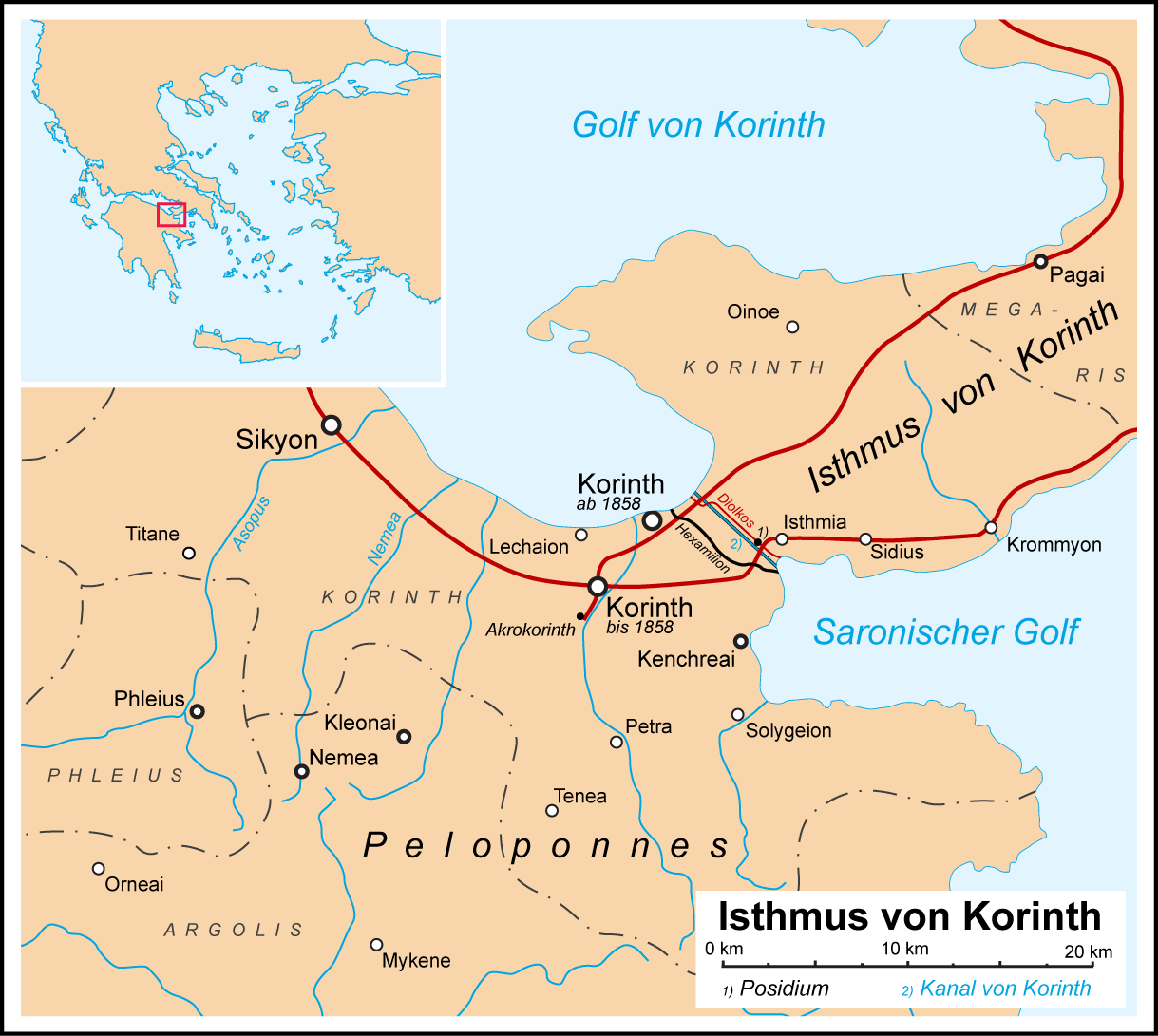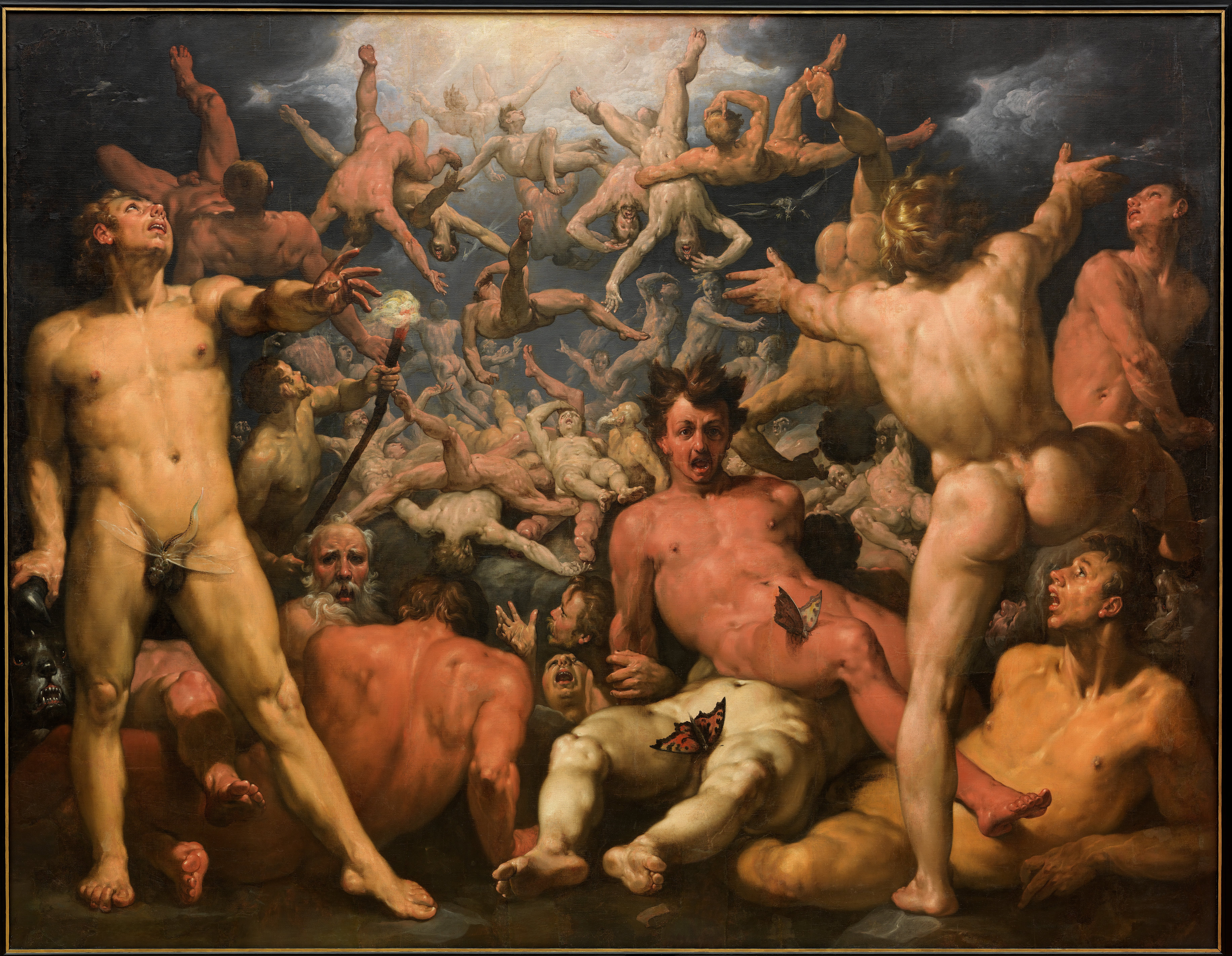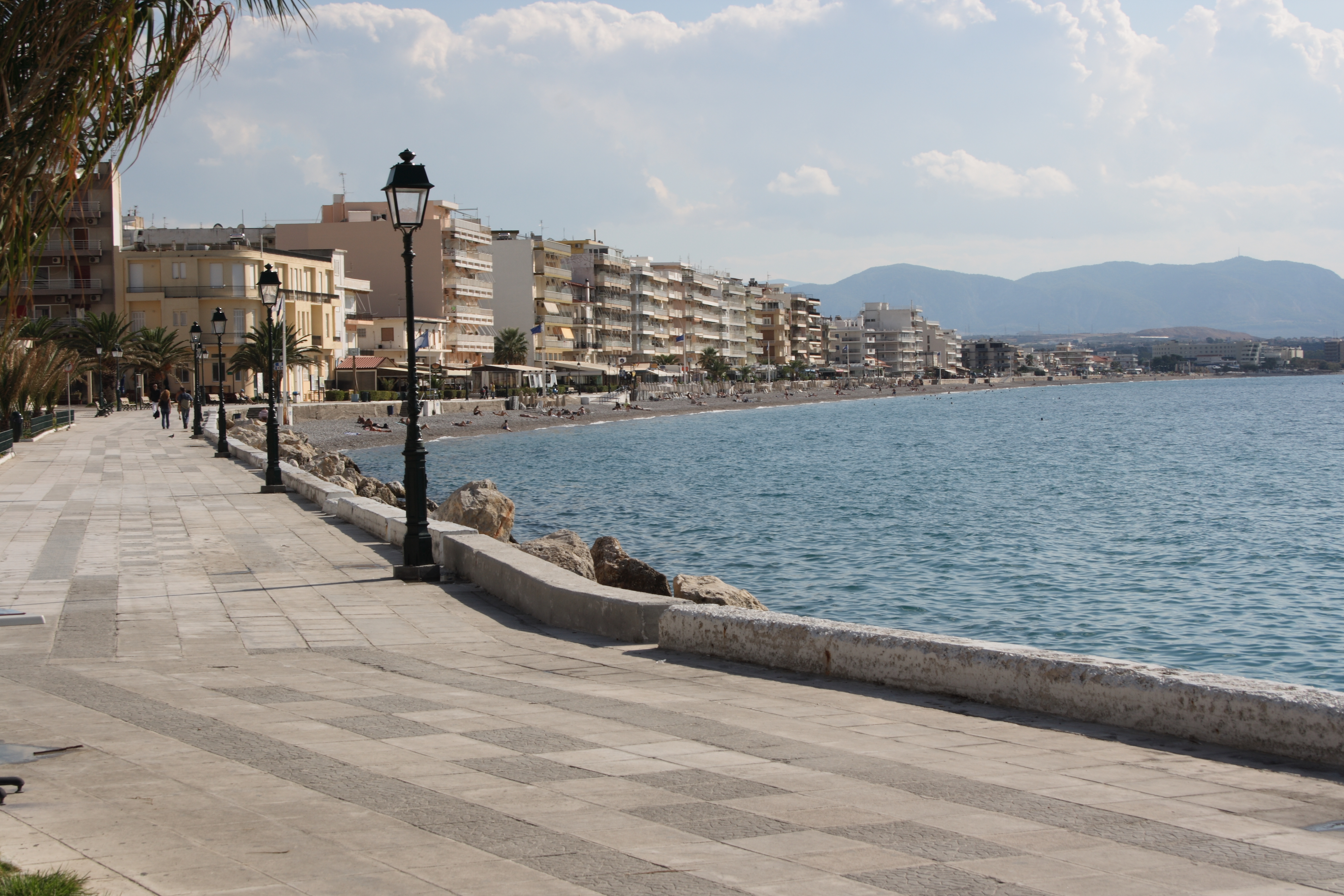|
Titani Akropolis
Titani (, ''Titáni''; before 1927: Voivonta (Βοϊβοντά, ''Voïvontá''), from the Slavic title "voivode") is a village in the municipality of Sikyona, Corinthia, Greece. It is situated at the foot of the mountain Vesizas, above the left bank of the river Asopos, at 580 m elevation. The ancient city Titane was situated near the present village. It is 1 km northeast of Bozikas, 15 km southwest of Kiato and 27 km west of Corinth. Population History Ancient Titane was part of the city-state of Sicyon. It is named after Titan, a brother of Helios. The city had a temple of Asclepius, built by Alexanor, a grandson of Asclepius. There were also a temple of Athena, and an altar of the Winds. Pausanias ''Description of Greece'' 2.11, 2.12 The acropolis of the ancient city has been excavated. See also *List of settlements in Corinthia This is a list of settlements in Corinthia, Greece. * Agioi Theodoroi * Agionori * Agios Ioannis * Agios Vasileios * Aidonia ... [...More Info...] [...Related Items...] OR: [Wikipedia] [Google] [Baidu] |
Peloponnese (region)
The Peloponnese Region (, ) is a region in southern Greece. It borders Western Greece to the north and Attica to the north-east. The region has an area of about . It covers most of the Peloponnese peninsula, except for the northwestern subregions of Achaea and Elis which belong to Western Greece and a small portion of the Argolid peninsula that is part of Attica. Administration The Peloponnese Region was established in the 1987 administrative reform. With the 2011 Kallikratis plan, its powers and authority were redefined and extended. Along with the Western Greece and Ionian Islands regions, it is supervised by the Decentralized Administration of Peloponnese, Western Greece and the Ionian Islands based at Patras. The region is based at Tripoli and is divided into five regional units (pre-Kallikratis prefectures), * Arcadia, * Argolis, * Corinthia, * Laconia and * Messenia, which are further subdivided into 26 municipalities. The largest city of the ... [...More Info...] [...Related Items...] OR: [Wikipedia] [Google] [Baidu] |
Sicyon
Sicyon (; ; ''gen''.: Σικυῶνος) or Sikyōn was an ancient Greek city state situated in the northern Peloponnesus between Corinth and Achaea on the territory of the present-day regional unit of Corinthia. The ruins lie just west of the modern village of Sikyona (previously Vasiliko). An ancient monarchy at the times of the Trojan War, the city was ruled by a number of tyrants during the Archaic and Classical period and became a democracy in the 3rd century BC. Sicyon was celebrated for its contributions to ancient Greek art, producing many famous painters and sculptors. In Hellenistic times it was also the home of Aratus of Sicyon, the leader of the Achaean League. Ancient history Sicyon was built on a low triangular plateau about 3 kilometres (two miles) from the Corinthian Gulf. Between the city and its port lay a fertile plain with olive groves and orchards. In Mycenean times, according to Eusebius, Sicyon had been ruled by a line of twenty-six mythical king ... [...More Info...] [...Related Items...] OR: [Wikipedia] [Google] [Baidu] |
List Of Settlements In Corinthia
This is a list of settlements in Corinthia, Greece. * Agioi Theodoroi * Agionori * Agios Ioannis * Agios Vasileios * Aidonia * Ancient Corinth * Angelokastro * Ano Trikala * Archaia Feneos * Archaia Nemea * Archaies Kleones * Asprokampos * Assos * Athikia * Bolati * Bozikas * Chalkeio * Chelydoreo * Chiliomodi * Corinth * Dafni * Dendro * Derveni * Dimini * Drosopigi * Elliniko * Ellinochori * Evangelistria * Evrostina * Examilia * Feneos * Galataki * Galatas * Geliniatika * Gonoussa * Goura * Isthmia * Kaisari * Kalianoi * Kallithea * Kamari * Karya * Kastania * Kastraki * Katakali * Kato Assos * Kato Dimini * Kato Loutro * Kato Synoikia Trikalon * Kato Tarsos * Kefalari * Kiato * Klenia * Klimenti * Kokkoni * Korfiotissa * Korfos * Koutalas * Koutsi * Krines * Kryoneri * Kyllini * Lafka * Lagkadaiika * Laliotis * Lechaio * Leonti * Loutraki-Perachora * Lygia * Lykoporia * Manna * Mati * Megas Valtos * Melissi * Mesi ... [...More Info...] [...Related Items...] OR: [Wikipedia] [Google] [Baidu] |
Pausanias (geographer)
Pausanias ( ; ; ) was a Greek traveler and geographer of the second century AD. He is famous for his '' Description of Greece'' (, ), a lengthy work that describes ancient Greece from his firsthand observations. ''Description of Greece'' provides crucial information for making links between classical literature and modern archaeology, which is providing evidence of the sites and cultural details he mentions although knowledge of their existence may have become lost or relegated to myth or legend. Biography Nothing is known about Pausanias apart from what historians can piece together from his own writing. However, it is probable that he was born into a Greek family and was probably a native of Lydia in Asia Minor. From until his death around 180, Pausanias travelled throughout the mainland of Greece, writing about various monuments, sacred spaces, and significant geographical sites along the way. In writing his '' Description of Greece'', Pausanias sought to put together ... [...More Info...] [...Related Items...] OR: [Wikipedia] [Google] [Baidu] |
Anemoi
In ancient Greek religion and Greek mythology, myth, the Anemoi () were wind gods who were each ascribed a cardinal direction from which their respective winds came (see Classical compass winds), and were each associated with various nature, seasons and weather conditions. They were the progeny of the Dawn deities, goddess of the dawn Eos and her husband, the god of the dusk, Astraeus. Etymology The earliest attestation of the word in Greek and of the worship of the winds by the Greeks, are perhaps the Mycenaean Greek word-forms , , , , i.e. "priestess of the winds". These words, written in Linear B, are found on the Knossos, KN Fp 1 and KN Fp 13 tablets. Mythology The Anemoi are minor gods and are subject to Aeolus (Odyssey), Aeolus. They were sometimes represented as wind, gusts of wind, and at other times were personified as winged men. They were also sometimes depicted as horses kept in the stables of the storm god Aeolus, who provided Odysseus with the Anemoi in ... [...More Info...] [...Related Items...] OR: [Wikipedia] [Google] [Baidu] |
Athena
Athena or Athene, often given the epithet Pallas, is an ancient Greek religion, ancient Greek goddess associated with wisdom, warfare, and handicraft who was later syncretism, syncretized with the Roman goddess Minerva. Athena was regarded as the patron and protectress of various cities across Greece, particularly the city of Athens, from which she most likely received her name. The Parthenon on the Acropolis of Athens is dedicated to her. Her major symbols include Owl of Athena, owls, olive trees, snakes, and the Gorgoneion. In art, she is generally depicted wearing a helmet and holding a spear. From her origin as an Aegean tutelary deity, palace goddess, Athena was closely associated with the city. She was known as ''Polias'' and ''Poliouchos'' (both derived from ''polis'', meaning "city-state"), and her temples were usually located atop the fortified acropolis in the central part of the city. The Parthenon on the Athenian Acropolis is dedicated to her, along with numero ... [...More Info...] [...Related Items...] OR: [Wikipedia] [Google] [Baidu] |
Alexanor
In Greek mythology, Alexanor (Ancient Greek: Ἀλεξάνωρ) a son of Machaon, and grandson of the Greek god Asclepius Asclepius (; ''Asklēpiós'' ; ) is a hero and god of medicine in ancient Religion in ancient Greece, Greek religion and Greek mythology, mythology. He is the son of Apollo and Coronis (lover of Apollo), Coronis, or Arsinoe (Greek myth), Ars .... Mythology Alexanor was worshipped as a hero in Titane of Sicyonia, where he established an Asclepieion temple built to his grandfather within a grove densely planted with cypresses. He also built a temple on the summit of Titane in the territory of Sicyon to honor his grandfather, around which there were dwellings for the use of those who came to solicit the aid of the god. Inside this Asclepieion, there were wooden statues (xoana) of Asclepius and Hygeia. Many believed that the statue of Asclepius was the work of Alexanor himself. In his honor, there was also his own statue inside the building. Ale ... [...More Info...] [...Related Items...] OR: [Wikipedia] [Google] [Baidu] |
Asclepius
Asclepius (; ''Asklēpiós'' ; ) is a hero and god of medicine in ancient Religion in ancient Greece, Greek religion and Greek mythology, mythology. He is the son of Apollo and Coronis (lover of Apollo), Coronis, or Arsinoe (Greek myth), Arsinoe, or of Apollo alone. Asclepius represents the healing aspect of the medical arts; his daughters, the "Asclepiades", are: Hygieia ("Health, Healthiness"), Iaso (from ἴασις "healing, recovering, recuperation", the goddess of recuperation from illness), Aceso (from ἄκεσις "healing", the goddess of the healing process), Aegle (mythology), Aegle (the goddess of good health) and Panacea (the goddess of universal remedy). He has several sons as well. He was associated with the Roman/Etruscan god Vediovis and the Egyptian Imhotep. The rod of Asclepius, a snake-entwined staff similar to the caduceus, remains a symbol of medicine today. Those physicians and attendants who served this god were known as the Therapeutae of Asclepius. ... [...More Info...] [...Related Items...] OR: [Wikipedia] [Google] [Baidu] |
Helios
In ancient Greek religion and Greek mythology, mythology, Helios (; ; Homeric Greek: ) is the god who personification, personifies the Sun. His name is also Latinized as Helius, and he is often given the epithets Hyperion ("the one above") and Phaethon ("the shining"). Helios is often depicted in art with a radiant crown and driving a horse-drawn chariot through the sky. He was a guardian of oaths and also the god of sight. Though Helios was a relatively minor deity in Classical Greece, his worship grew more prominent in late antiquity thanks to his identification with several major solar divinities of the Roman period, particularly Apollo and Sol (Roman mythology), Sol. The Roman Emperor Julian (emperor), Julian made Helios the central divinity of his short-lived revival of Religion in ancient Rome, traditional Roman religious practices in the 4th century AD. Helios figures prominently in several works of Greek mythology, poetry, and literature, in which he is often described ... [...More Info...] [...Related Items...] OR: [Wikipedia] [Google] [Baidu] |
Titan (mythology)
In Greek mythology, the Titans ( ; ) were the pre- Olympian gods. According to the ''Theogony'' of Hesiod, they were the twelve children of the primordial parents Uranus (Sky) and Gaia (Earth). The six male Titans were Oceanus, Coeus, Crius, Hyperion, Iapetus, and Cronus; the six female Titans—called the Titanides () or Titanesses—were Theia, Rhea, Themis, Mnemosyne, Phoebe, and Tethys. After Cronus mated with his older sister Rhea, she bore the first generation of Olympians: the six siblings Zeus, Hades, Poseidon, Hestia, Demeter, and Hera. Certain other descendants of the Titans, such as Prometheus, Atlas, Helios, and Leto, are sometimes also called Titans. The Titans were the former gods: the generation of gods preceding the Olympians. They were overthrown as part of the Greek succession myth, which tells how Cronus seized power from his father Uranus and ruled the cosmos with his fellow Titans before being in turn defeated and replaced as the ruling pantheon o ... [...More Info...] [...Related Items...] OR: [Wikipedia] [Google] [Baidu] |
Corinth
Corinth ( ; , ) is a municipality in Corinthia in Greece. The successor to the ancient Corinth, ancient city of Corinth, it is a former municipality in Corinthia, Peloponnese (region), Peloponnese, which is located in south-central Greece. Since the 2011 local government reform, it has been part of the Corinth (municipality), municipality of Corinth, of which it is the seat and a municipal unit. It is the capital of Corinthia. It was founded as Nea Korinthos (), or New Corinth, in 1858 after an earthquake destroyed the existing settlement of Corinth, which had developed in and around the site of the ancient city. History Corinth derives its name from Ancient Corinth, a city-state of antiquity. The site was occupied from before 3000 BC. Ancient Greece Historical references begin with the early 8th century BC, when ancient Corinth began to develop as a commercial center. Between the 8th and 7th centuries, the Bacchiad family ruled Corinth. Cypselus overthrew the Bacchiad f ... [...More Info...] [...Related Items...] OR: [Wikipedia] [Google] [Baidu] |
Corinthia
Corinthia (; ) is one of the regional units of Greece. It is part of the modern regions of Greece, region of Peloponnese (region), Peloponnese. It is situated around the city of Corinth, in the north-eastern part of the Peloponnese peninsula. Geography Corinthia borders on Achaea to the west and southwest, the Gulf of Corinth and Attica to the north, the Saronic Gulf to the east, Argolis to the south and Arcadia (regional unit), Arcadia to the southwest. The Corinth Canal, carrying ship traffic between the Ionian Sea, Ionian and the Aegean Sea, Aegean seas, is about east of Corinth, cutting through the Isthmus of Corinth. Corinthia is increasingly seen as part of the wider metropolitan area of Athens, with municipalities, such as Agioi Theodoroi in the easternmost part of the regional unit, being considered suburbs of Athens. The area around Corinth and the western Saronic Gulf, Saronic including the southeastern part are made up of fault lines including the Corinth Fault, the P ... [...More Info...] [...Related Items...] OR: [Wikipedia] [Google] [Baidu] |






